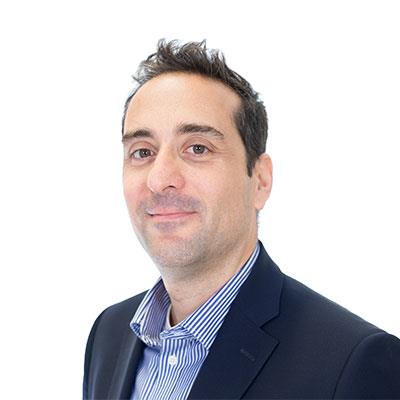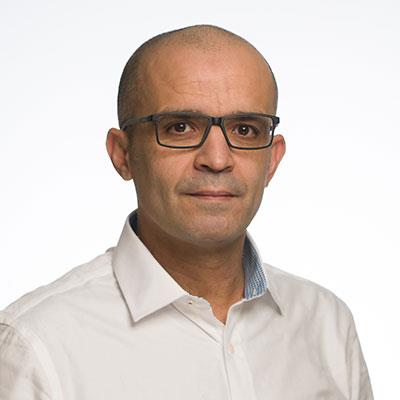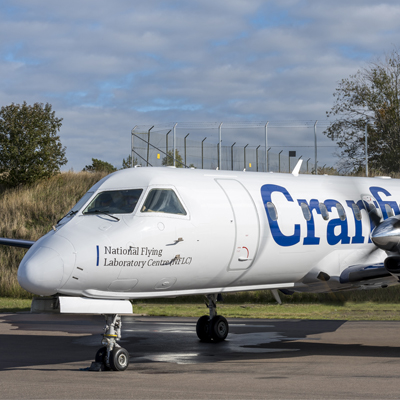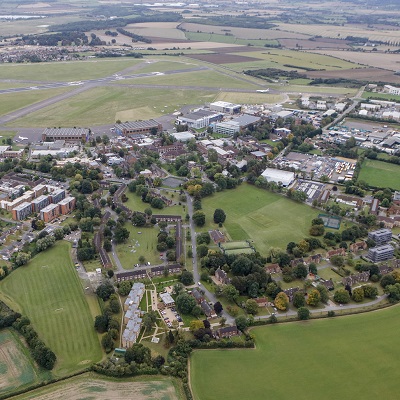Overview
- Start dateFebruary
- DurationMSc: three or two years part-time; PgDip: two years part-time; PgCert: one or two years part-time
- DeliveryTaught modules 50% (including group project 10%), individual research project 50%
- QualificationMSc, PgDip, PgCert
- Study typePart-time
- CampusCranfield campus
Who is it for?
We recognise the challenge of undertaking part-time study while you are working. This course is specifically designed for people working in engineering or technical management positions in the aerospace industry who wish to study for an accredited master's degree while they are in employment.
You are required to attend a total of nine weeks of lectures over three years on a modular basis. The first-year attendance includes one week in February, followed by one week in June and one week in November. As well as six compulsory modules, you will choose three optional modules in order to tailor the course to your particular interests and requirements.
Why this course?
This course provides accelerated development of engineering staff whilst delivering the right mix of technical and business skills for careers in the aerospace industry. The course will broaden your understanding of aircraft engineering and design subjects, and provide a strong foundation for career development in technical, integration and leadership roles. This accredited master's course supports your career development by meeting the further learning requirements for Chartered Engineer status. The group project allows you to gain experience of overall aircraft early stage design, and the individual project allows you to investigate a topic that is of interest to your employer, with supervision from experienced staff.
Cranfield has been at the forefront of postgraduate education in aircraft engineering since 1946. We have a global reputation for our advanced postgraduate education and extensive applied research. You can be sure that your qualification will be valued and respected by employers.
Informed by industry
The Industrial Advisory Panel, comprising senior industry professionals, provides input into the curriculum in order to improve the employment prospects of our graduates. Panel members include:
- Airbus UK - Filton
- BAE Systems
- Canadian High Commission
- Department for Business, Enterprise and Regulatory Reform
- Marshall Aerospace
- Messier-Bugatti-Dowty
- RAF
- Military Aviation Authority
Course details
The MSc in Aircraft Engineering consists of two elements: taught modules (including a group design project) and an individual research project.
Course delivery
Taught modules 50% (including group project 10%), individual research project 50%
Group project
The group project is introduced in the Initial Aerospace Vehicle Design module and involves working in teams to produce an aircraft concept from a given set of mission requirements. It assessed by post module assignment and constitutes 20 credits, 10% of the MSc.
Individual project
The individual research project allows you to delve deeper into an area of specific interest of your choice, and you are encouraged to select a project that is of relevance to your sponsoring company. You will complete the individual project flexibly during the three years of your studies.
Recent individual research projects have included:
- Hydrogen Civil Airliner Design
- Conceptual Design of a Long-Range Air-Air refuelling UAV for Military Fast Jets
- A ‘More Integrated’ Approach to RFLP in Early Lifecycle Development
- An Investigation into Aircraft Disposal Techniques for Improved Environmental Sustainability
- Rapid eVTOL Wingbox Sizing
Modules
Keeping our courses up-to-date and current requires constant innovation and change. The modules we offer reflect the needs of business and industry and the research interests of our staff and, as a result, may change or be withdrawn due to research developments, legislation changes or for a variety of other reasons. Changes may also be designed to improve the student learning experience or to respond to feedback from students, external examiners, accreditation bodies and industrial advisory panels.
To give you a taster, we have listed the compulsory and elective (where applicable) modules which are currently affiliated with this course. All modules are indicative only, and may be subject to change for your year of entry.
Course modules
Compulsory modules
All the modules in the following list need to be taken as part of this course.
Introduction to Avionics
| Aim |
To provide you with a comprehensive overview of avionics systems and infrastructures. |
|---|---|
| Syllabus |
• Historical overview of the development of avionics hardware. • The evolution of the cockpit. • Modern Human-machine interface and interaction. • Automation – evolution, the modern fly-by-wire autopilot and the flight management system. • Display technologies – HDD, HUD, HMD. • Airborne sensor systems. • Fundamentals of radio communication. • Navigation and communications systems – terrestrial and satellite-based systems, autonomous navigation systems, digital data links. • Radar – principle of operation, operational modes, radar cross section. • Avionics databases – fundamental architectures; ARINC 429, 629, 664; MIL-1553. • Traffic and terrain surveillance and situational awareness systems – transponder, TCAS and EGPWS. • Principles of air traffic management. • Military applications – electronic warfare and countermeasures. • Product design considerations – design standards, fault tolerance and product life cycle. • Case study – a complete avionics installation. This module has an additional tutorial inside the cockpit of the large aircraft flight simulator. Students will be able to appreciate the cockpit layout design, understand information displayed to the pilot, and have the opportunity of flying the simulator. This tutorial is intended to enhance the learning process and the knowledge gained. |
| Intended learning outcomes |
On successful completion of this module you should be able to:
|
Initial Aerospace Vehicle Design
| Aim |
|
|---|---|
| Syllabus |
In addition to familiarising you with the design process the module is designed to encourage them to work together effectively as a team and to develop communication skills that will be further utilised throughout the MSc course. Introduction to Aircraft Design • The design and development process. • Importance of requirements and mass. • Reliability and Maintainability. Aircraft Conceptual Design • Project design process and parametric techniques. • Flight path performance. • Drag and weight prediction: Drag sources, polar estimation, weight prediction methods. • Layout aspects: wing; powerplant; landing gear; fuselage. • Overall project synthesis. |
| Intended learning outcomes |
On successful completion of this module you should be able to: 1. Assess the multidisciplinary nature of aircraft design. 2. Apply conceptual design methods and analysis to simple aircraft design problems and create new designs. Evaluate those designs. 3. Evaluate your own transferable skills in team building, networking (including intersite communication) and independent learning. |
Design and Development of Airframe Systems
| Aim |
To expand your knowledge of airframe systems, their role, design and integration. In particular, to provide you with an appreciation of the considerations necessary and methods used when selecting aircraft systems and the effect of systems on the aircraft as a whole. |
|---|---|
| Syllabus |
|
| Intended learning outcomes |
On successful completion of this module you should be able to:
|
Major Component Design and Manufacture
| Aim |
|
|---|---|
| Syllabus |
|
| Intended learning outcomes |
On successful completion of this module you should be able to: 1. Assess the constraints imposed on aircraft design by manufacturing and operational considerations.2. Evaluate the influences of design for manufacture and maintainability on both structure and aircraft systems. 3. Evaluate the range of design solutions for aircraft component design. 4. Relate your acquired knowledge to an aircraft design problem. |
Methodologies for Integrated Product Development
| Aim |
This module aims to introduce several major topics associated with Engineering Integration in the context of what has been known in recent years as Integrated Product Development (IPD) in the Extended/Virtual Enterprise. The objective is to follow the process from the early stages of the product development lifecycle when the Prime has to deal with vague or difficult to quantify customer needs and to convert those to sound (functional) requirements and subsequently to design embodiments. The emphasis is on the architectural design enabling methods, including Model Based Systems Engineering (MBSE). |
|---|---|
| Syllabus |
Introduction
Design for X - Modularity and Evolvability
Product Lifecycle Management (PLM) |
| Intended learning outcomes |
On successful completion of this module you should be able to: |
Manufacturing
| Aim |
This module provides you with a general understanding of a range of issues associated with aircraft manufacturing. The module covers mostly technical, but with some management topics related to manufacturing processes and technologies. Topics include material and manufacturing process selection, modern manufacturing technologies such as 3D printing and composite manufacture. |
|---|---|
| Syllabus |
• Manufacturing systems. • Materials and manufacturing process selection. • Joining technologies. • Composite manufacture. • Automation technologies. • Lifecycle analysis in manufacturing. • Manufacturing cost engineering. • Quality engineering. |
| Intended learning outcomes |
On successful completion of this module you should be able to:
|
Elective modules
Two of the modules from the following list need to be taken as part of this course.
Fatigue and Damage Tolerance
| Aim |
|
|---|---|
| Syllabus |
|
| Intended learning outcomes |
On successful completion of this module a student should be able to:
|
Aircraft Performance for Aircraft Engineering
| Module Leader |
|
|---|---|
| Aim |
Please note that this is a two week module. |
| Syllabus |
|
| Intended learning outcomes |
On successful completion of this module you should be able to:
|
Design, Durability and Integrity of Composite Aircraft Structures
| Aim |
The course seeks to provide engineers with knowledge of polymer composite properties and behaviour relevant to their in-service performance durability and maintenance in aircraft structures |
|---|---|
| Syllabus |
Basic principles |
| Intended learning outcomes |
On successful completion of this module you should be able to:
|
Detail Stressing
| Aim |
|
|---|---|
| Syllabus |
|
| Intended learning outcomes |
On successful completion of this module you should be able to:
|
Introduction to Autonomous Systems
| Aim |
|
|---|---|
| Syllabus |
|
| Intended learning outcomes |
On successful completion of this module you should be able to: • Appraise the concept of autonomy, the main application domains and limitations of autonomous systems, as well as the potential problems and technical challenges. • Evaluate the lifecycle development processes of autonomous systems, and assess the general frameworks and architectures for autonomous systems. • Demonstrate a knowledge of some of the key technologies and principles for implementing autonomous systems and their implications for autonomous systems design. |
Through life System Effectiveness
| Aim |
|
|---|---|
| Syllabus |
The concept and definitions for system effectiveness. • The definitions of ARM&M and logistics to deliver systems effectiveness in relation to the stated requirements. • Explain the value streams (i.e. Avoid, Contain, Recover, Convert). • Definitions and measurement of logistics for supportability strategies and contracting. • Supportability Concepts and Logistics, their elements and interaction with AR&M. • Quantitative Requirements, Mean Time Between Failure (MTBF) logistic delay, Mean Time to Repair (MTTR) and impact on service provided. • Understand failure rate, hazard rate, failure distributions and failure avoidance including failure analysis in design and use of R&M predictions. • Integrated Logistic Support (ILS) and impact on system effectiveness and system sustainment through life including the design of the support solution. • Understand the philosophy, scope and capabilities of ILS and Logistics Support Analysis (LSA) and associated systems thinking. • AR&M and supportability tools e.g. FMECA (Failure Modes, Effects and Criticality Analysis) and FTA (Fault Tree Analysis) techniques and Reliability Centred Maintenance (RCM). • Human Factors Integration (HFI) and impact on system effectiveness and system sustainment through life. • Testing and Evaluation and assurance of system effectiveness and sustainment for system operation and support. • Data collection and management/interpretation of data. |
| Intended learning outcomes |
On successful completion of this module you should be able to: • Appraise supportability concepts & logistics and how they contribute to system effectiveness and sustainment. • Analyse the measures of Availability, Reliability and Maintainability (AR&M), how they are manipulated and applied and how their delivery can be assured. • Evaluate the AR&M and logistic techniques, including testing and trials, used throughout the lifecycle. • Evaluate the management issues for AR&M and Supportability in providing operational availability at optimum Through Life Cost (including programme management, risk management and capability integration). • Critically evaluate the strategies to plan system effectiveness through-life by considering the value streams. |
Tools for Integrated Product Development
| Aim |
The aim of this module is to introduce you to role of Computer Aided Design (CAD) technologies in a modern integrated Product Development process and provide hands-on experience of CAD using the CATIA v5 software. |
|---|---|
| Syllabus |
Introduction to Integrated Product Development (IPD) for aircraft design. Overview of Computer Aided Design, Manufacture and Engineering tools and their role in IPD. Introduction to CAD modelling techniques: • Solid Modelling • Assembly Modelling • Parametric Design • Surface Modelling Computer Aided Manufacture and Rapid Prototyping. Hands on CATIA exercises using CATIA v5. Aerospace Industry Case Studies. |
| Intended learning outcomes |
On successful completion of this study you should be able to:
|
Teaching team
You will be taught by experienced Cranfield academic staff, many of whom have industrial experience. The course also includes visiting lecturers from industry who will relate the theory to current best practice. Past speakers include: Head of Worldwide Suppliers, Airbus, Head of Engineering Capability, BAE Systems, Chief of Manufacturing Engineering Processes and Capability, BAE Systems. The Course Director for this programme is Dr Craig Lawson.
Accreditation
The Aircraft Engineering MSc is accredited by Mechanical Engineers (IMechE) and the Royal Aeronautical Society (RAeS) on behalf of the Engineering Council as meeting the requirements for further learning for registration as a Chartered Engineer (CEng). Candidates must hold a CEng accredited BEng/BSc (Hons) undergraduate first degree to show that they have satisfied the educational base for CEng registration.
Your career
This course will provide you with the tools and experience to help enhance your career opportunities in the aerospace industry, enabling you to progress further in your present discipline, or move into other specialist or integration roles. Networking with students from different backgrounds is valuable to gain an appreciation of how other companies work.
This course can be used for Chartered Engineer status, which can result in new career opportunities for the future.
Cranfield’s Career Service is dedicated to helping you meet your career aspirations. You will have access to career coaching and advice, CV development, interview practice, access to hundreds of available jobs via our Symplicity platform and opportunities to meet recruiting employers at our careers fairs. Our strong reputation and links with potential employers provide you with outstanding opportunities to secure interesting jobs and develop successful careers. Support continues after graduation and as a Cranfield alumnus, you have free life-long access to a range of career resources to help you continue your education and enhance your career.
How to apply
Click on the ‘Apply now’ button below to start your online application.
See our Application guide for information on our application process and entry requirements.











